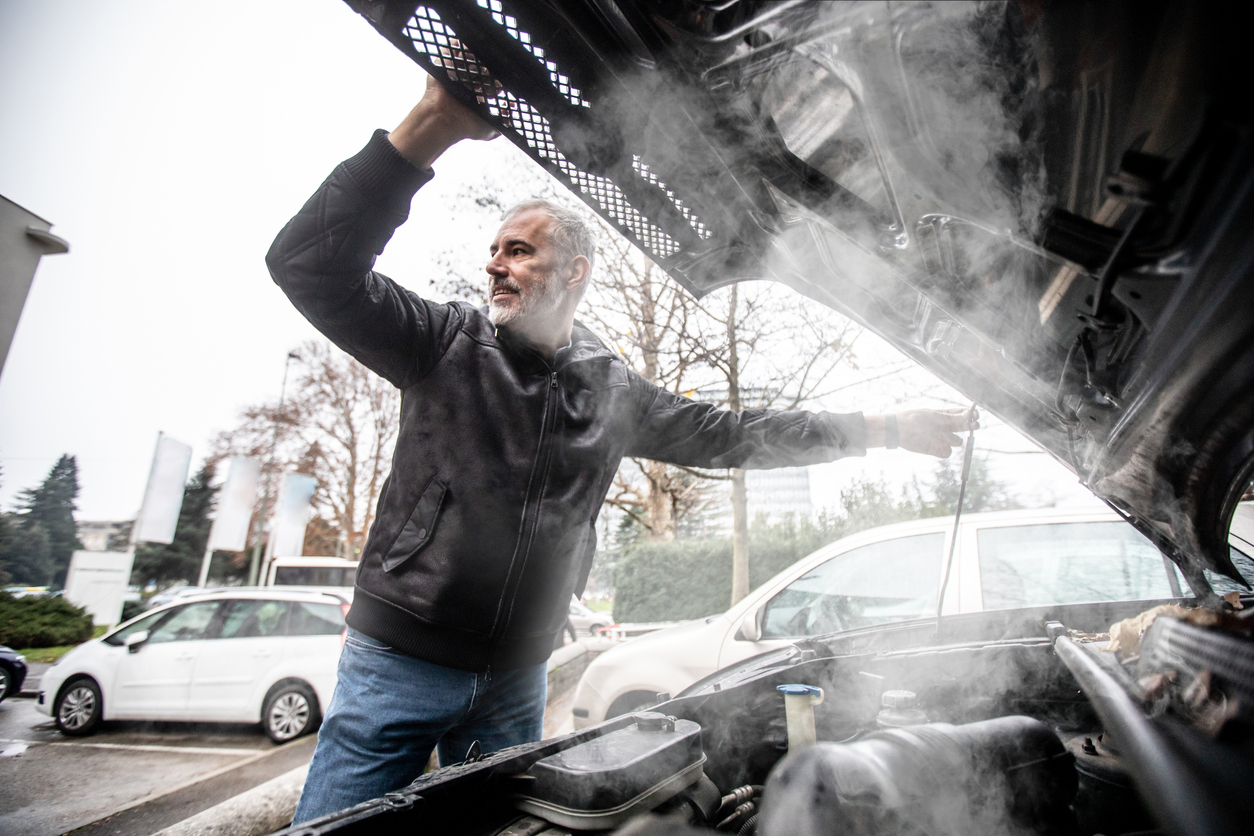When Your Car Overheats

When your car overheats, it can cause a trickle effect of problems that may give you headaches, and issues that may be tough to solve. Modern cars include sophisticated cooling systems that keep your engine running regardless of the weather. These systems come with multiple heat sensors and computer-controlled electric fans. However, your car is still at risk of overheating despite these innovative technologies.
Why do Cars Overheat?
A vehicle’s engine can overheat for many reasons. Some issues require relatively simple solutions, such as replenishing antifreeze. But other problems could result in long-term damage, forcing you to resort to personal auto insurance.
The following factors can cause a car to overheat.
Insufficient to No Coolant
Coolant system failure may occur if there is insufficient coolant or antifreeze. You must refill or top off fluid levels if they fall below the manufacturer’s recommendations.
When refilling an empty reservoir with coolant, add equal levels of coolant and water. Refer to your owner’s manual if you don’t know where the coolant reservoir tank is or how to fill it.
Leak in the Cooling System
A potential leak could lead to an empty coolant reservoir tank. It’s often possible to detect leaks in the coolant by looking for spots or puddles on the ground. Most coolants smell sweet and may be colored green, blue, or orange.
Broken Water Pump
Coolant circulates through the engine via the water pump. Dirty coolant may not flow freely through the pump, resulting in engine overheating.
Radiator Issues
Radiators and fans reduce engine heat by decreasing the coolant’s temperature. If the fans malfunction, the radiator may not dissipate heat effectively. It could result in an abnormal increase in temperature.
Oil is Too Low
Motor oil helps control overall temperatures by lubricating the engine’s parts. Low oil levels could cause the engine’s temperatures to rise.
Thermostat Failure
The vehicle’s thermostat regulates engine temperatures like a home thermostat would. Coolant won’t flow as intended when a thermostat fails, possibly resulting in engine damage.
Issues with the Belts and Hoses
Coolant hoses can leak, rupture, or become blocked and belts may become worn out or frayed. These problems impair air and coolant flow to and from the engine, resulting in unexpected damage.
Clogged Heater Core
Clogged or blocked heat exchanger units may prevent coolant flow. It is another common cause of engine overheating.
How to tell if your car is overheating?
Overheating can manifest in many different ways. There are some things you need to look out for.
- Steam coming from underneath the vehicle’s hood
- The engine temperature gauge spiking to “H” or moving into the red zone
- An unpleasant smell coming from the front of the car, particularly near the hood
The smell tells you whether coolant or oil is leaking from the vehicle. Coolant typically smells sweet, while oil usually gives off a burnt odor.
What to do if your car overheats?
There are some solutions you can take if your car overheats.
Turn on the Heater
Turning on the heater may seem counterintuitive, but it could transfer heat from the engine to the passenger compartment. It reduces the engine’s cooling system load and could reverse the overheating in some cases. The best way to tell if it’s working is when the warning indicator light goes out, or the temperature gauge returns to neutral.
Stop Immediately
Stop and turn off the engine if your car continues to overheat. This method is the safest way to cool the engine. If you need a tow, call a roadside assistance service.
Add Coolant
After the hood has cooled enough to touch, open the hood with gloves on and locate the radiator cap. Cover the lid with a towel, gently push it down, and loosen it a quarter turn to release the pressure built up by the coolant when it expanded as it was heated.
Next, fill the radiator cap with water and antifreeze, and slowly add coolant until the level reaches “full.” Then it would be best to put some coolant into the small overflow reservoir on the radiator’s side.
Finally, replace the cap and start the engine. The temperature gauge should return to normal. Likewise, the red warning light goes out. Then you can proceed cautiously and observe the temperature gauge closely.
Remember that adding coolant won’t solve the problem. However, it can let you drive safely to the closest auto repair shop. When you get there, have a professional inspect your car’s cooling system.
About Daniels Insurance, Inc.
At Daniels Insurance, Inc., we have a unique understanding of the risks that businesses like yours face on a regular basis. With the backing of our comprehensive coverages and our dedication to customer service and quick claims resolution, your business will be fully protected. For more information, contact us today at (855) 565-7616.
